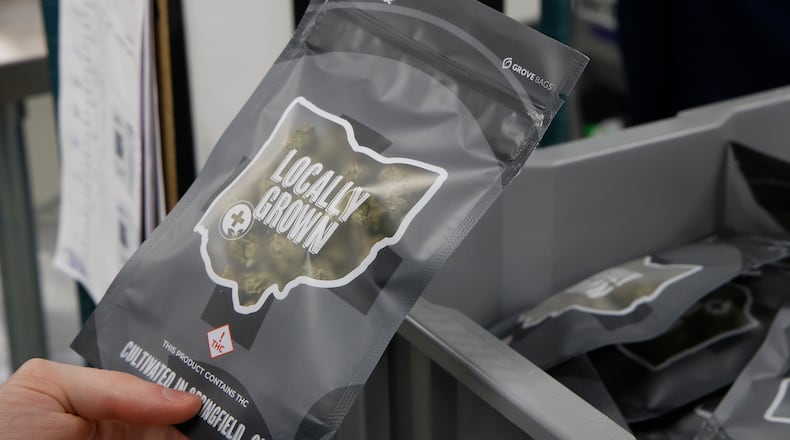Ohioans passed Issue 2 more than a year ago, and recreational sales started this August. Under Ohio law, customers 21 and older can buy up to 2.5 ounces of recreational cannabis at licensed dispensaries or home-grow up to six plants per person and 12 plants per residence.
Sixteen of the state’s 124 licensed dual-use dispensaries are located in the Dayton region.
No supply shortage
Before the launch of recreational sale, cannabis industry experts asked hopeful customers to be patient, as certain products were expected to run out of stock due to high demand.
But McMillin said shelves are remaining consistently stocked, noting cannabis growers and processors planned ahead of legalization and began boosting production efforts.
“I don’t think anyone is running short on product,” she said. “We definitely do not have a supply shortage, either from a cultivation perspective, from a wholesaler perspective, or from the retail perspective.”
But Ohio’s staggered rules for dispensaries, McMCillin said, also control what products dispensaries can sell. McMillin said many customers come into their local dispensary to seek pre-rolled cannabis, but dispensaries aren’t permitted to sell them.
Ohio law also controls how dispensaries can market themselves, with dispensaries submitting advertisements to the state for approval. McMillin said stringent advertising rules make it difficult for dispensaries to create public service announcements about the rules surrounding adult-use.
“I think there’s just been a lot of things that slowed down the take off of this,” McMillin said. “We’re still doing well, and we’re still moving forward. But it hasn’t been an explosion.”
A budding market
Lines may not be out the door for area dispensaries, but cannabis sales are still raking in millions in revenue statewide.
As of last week, Ohio dispensaries have sold 19,458 pounds of non-medical plant material, according to the Ohio Division of Cannabis Control. The state authority over the adult-use program recorded more than 2 million receipts since the program’s start.
The average price of plant material, as of last week, was $21.87 per one-tenth ounce — or $7.73 per gram.
Ohio has a 10% excise tax for every non-medical marijuana sale. Municipalities that permit dispensaries to operate within their borders receive 36% of this tax fund. Taxes also go toward a social equity fund, a substance abuse and addiction fund and more.
A 2023 study by the Ohio State University’s Drug Policy Enforcement Center estimated that Ohio’s recreational market could generate as much as $403 million in its fifth year of operation.
About the Author

